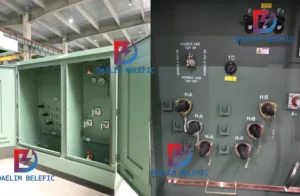
How to Choose Pad Mounted Transformer?
Table of Contents Selecting the right pad-mounted transformer requires careful consideration of several critical factors, as these ground-mounted distribution transformers play a vital role
ELECTRIC, WITH AN EDGE
La energía solar es una fuente de energía limpia y una importante fuente de energía para el futuro. La gente ha hecho algunos progresos en la tecnología de energía solar, tanto para uso público como privado, lo que ha proporcionado a las personas más recursos de energía. La tecnología de energía solar es conveniente, rápida, no contaminante y se desarrolla muy rápidamente.
El artículo analiza la tecnología de generación de energía solar fotovoltaica desde el principio de la generación de energía solar, analiza el estado de desarrollo actual de la tecnología de generación de energía solar fotovoltaica y desarrolla la perspectiva de la situación actual.
El rápido desarrollo de la economía social y la mejora del nivel de vida de los residentes son inseparables del apoyo de la energía eléctrica. Sin electricidad, la producción diaria y la vida de los residentes se verán muy afectadas, y varias industrias no podrán operar normalmente, y la sociedad se verá muy afectada por el impacto negativo.
En los últimos años, la demanda de energía eléctrica ha ido en aumento y se necesita más energía eléctrica para apoyar el desarrollo de la sociedad.
Los recursos no renovables como el carbón y el gas natural están disminuyendo, y es urgente buscar alternativas de energía limpia. La energía solar, como recurso renovable, es una fuente enorme con perspectivas de desarrollo prometedoras.
La tecnología de energía solar es una nueva tecnología limpia, no contaminante y renovable, en el núcleo del suplemento energético, su papel en el proceso de desarrollo energético es enorme, es actualmente una de las energías alternativas más ideales.
En la actualidad, el problema de la escasez de energía en el mundo es prominente, el desarrollo y la utilización de la energía solar juega un papel clave para aliviar este problema.
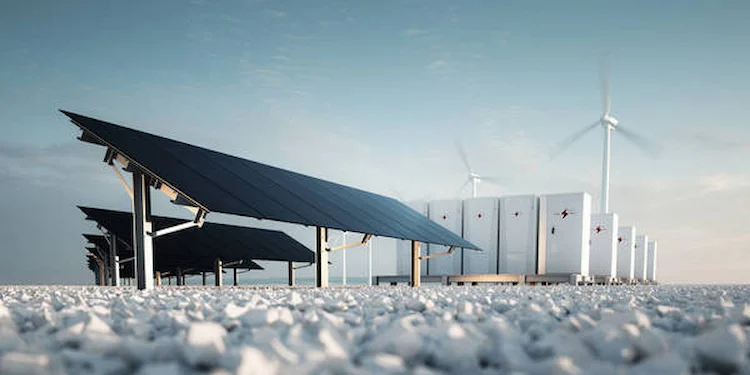
Con el desarrollo del tiempo, el consumo humano de energía está aumentando y el desarrollo económico también ha acelerado el consumo de energía.
La tasa de consumo de energía no puede alcanzar la tasa de regeneración y, a la larga, la humanidad se enfrentará a una crisis existencial.
Por lo tanto, cómo reducir el consumo de fuentes de energía tradicionales no renovables o buscar nuevas fuentes alternativas de nueva energía es el principal problema a resolver en el mundo de hoy.
La tecnología de energía solar es, sin duda, un camino de desarrollo sostenible.
Debido a diferentes principios, la generación de energía solar se divide en dos tipos de método de conversión de luz-térmica-electricidad y método de conversión directa de luz-electricidad, y el segundo tipo es la conocida tecnología de generación de energía solar fotovoltaica.
Read on : The Ultimate Guide to Transformer for Solar Power Plant
Este método primero usa colectores solares para recolectar energía térmica, convertirla en vapor y luego usar el vapor para impulsar una turbina para generar electricidad.
La inversión inicial de las centrales eléctricas que utilizan este método es de 5 a 10 veces mayor que la de las centrales térmicas ordinarias, y la eficiencia es baja, por lo que no se usa ampliamente en varios países.
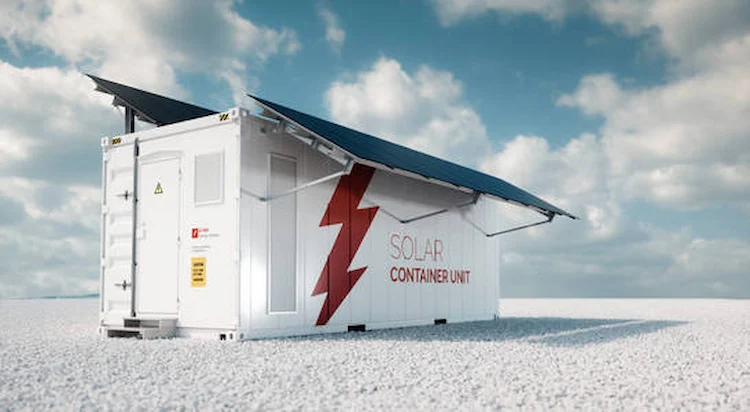
Learn More About the Windings of sola power transformer for sola power supply
En 1839, científicos franceses descubrieron accidentalmente el efecto fotovoltaico, es decir, “el fenómeno por el cual la luz provoca una diferencia de potencial entre las diferentes partes de un semiconductor no homogéneo o unión entre semiconductor y metal”.
Es el origen de la generación de energía solar y sentó las bases para el desarrollo de las células solares. Más tarde, después del desarrollo, los Bell Labs de los Estados Unidos en 1951 realmente desarrollaron una tecnología de energía solar exitosa.
La tecnología de generación de energía solar fotovoltaica utiliza materiales semiconductores y el efecto fotovoltaico para convertir la energía solar en electricidad, brindando soporte de energía en forma de uso independiente y generación de energía conectada a la red.
Hay inversores, módulos de paneles solares, controladores, componentes electrónicos, transformadores solares, etc. en los sistemas de generación de energía fotovoltaica.
Entre ellos, la celda solar es el equipo clave central, que es un fotodiodo semiconductor, un dispositivo que puede convertir directamente la luz solar en electricidad, que utiliza el efecto fotovoltaico.
Cuando la luz del sol incide en la unión P-N de un semiconductor, se forma un nuevo par hueco-electrón.
Bajo la acción del campo eléctrico de la unión P-N, los huecos fluyen de la región N a la región P, mientras que los electrones fluyen en dirección opuesta, de la región P a la región N, y si el circuito está conectado, un se formará corriente.
Cuando se conectan varias celdas en serie y en paralelo, este cuadrado de celda solar tiene una gran potencia de salida.
Las celdas solares son flexibles, limpias y permanentes. Mientras exista el sol, la energía solar siempre existirá, por lo que las células solares también se pueden usar para siempre.
En comparación con la generación de energía nuclear y la generación de energía térmica, la generación de energía solar es más limpia y más amigable con el medio ambiente.
Read more: What Solar Transformer is Used For Solar Power Plant?
En la tecnología solar fotovoltaica, la clave es la tasa de conversión de los paneles solares, lo que significa una mayor generación de energía. En las celdas solares, las aplicaciones más comunes son las celdas de semiconductores compuestos y las celdas basadas en silicio.
Read on : Typical fault analysis and handling of a Solar power plant pad mounted transformer

El material de silicio semiconductor es costoso y es demasiado costoso elegir este material para la batería. El costo del semiconductor compuesto es muy bajo y el efecto de usarlo como batería en lugar de material de silicio puro es casi el mismo.
Los dos tipos principales de baterías hechas de semiconductores compuestos son las baterías CIGS y las baterías CdTe.
Los semiconductores compuestos pueden ajustar el ancho de la brecha de energía a granel entre ellos, lo que puede hacer que coincidan con el espectro de energía solar y mejoren la eficiencia de convertir la energía de la luz en electricidad.
Teóricamente, las celdas de CdTe pueden convertir alrededor del 30 % de la energía luminosa en electricidad, y su bajo costo y alta estabilidad son ventajas sobresalientes.
En el proceso de convertir la energía luminosa en electricidad, se produce el metal Cd, que es tóxico para el medio ambiente.
Se ha encontrado que las celdas de CdTe producen la menor cantidad de metales nocivos y causan el menor daño al medio ambiente en comparación con las celdas de silicio cristalino y las celdas de petróleo para la conversión de energía eléctrica equivalente.
Learn More About the: How does a power transformer operate and manage a power plant?
Los paneles solares a base de silicio se dividen en células de silicio no cristalino y células de silicio cristalino. Las celdas de silicio cristalino se subdividen en celdas de silicio policristalino y celdas de silicio monocristalino.
(1) Las celdas de silicio policristalino tienen una eficiencia de conversión más baja, un costo más bajo y el rendimiento de costo general más alto. Por lo tanto, la tasa de uso más alta en el mercado son las células de silicio policristalino.
(2) Las celdas de silicio monocristalino tienen una alta estabilidad y una alta tasa de conversión, pero el único inconveniente es el alto costo, por lo que la aplicación no es tan buena como la de las celdas de silicio policristalino.
Actualmente, la principal dirección de investigación y desarrollo de la tecnología de generación de energía fotovoltaica de silicio cristalino es la tecnología de generación de energía fotovoltaica de película delgada de silicio.
Los paneles solares de película delgada de silicio se encuentran en el vidrio tradicional y otros materiales basados en la capa adicional de película delgada de silicio, hechos para soportar el sustrato y, finalmente, convertidos en células solares.
El proceso es más complejo, el consumo de material es menor, el costo es más económico.
El enfoque del desarrollo de sistemas fotovoltaicos conectados a la red sigue siendo las células solares basadas en silicio, la investigación y el desarrollo de células solares basadas en silicio de alta eficiencia pueden reducir aún más el costo de la batería.
El desarrollo de la tecnología de celdas solares no solo puede resolver los problemas de la batería en sí en términos de materiales y estructura, sino también hacer que el sistema en su conjunto sea más estable, lo que conduce al aumento de la capacidad instalada total de generación de energía fotovoltaica y la mayor expansión de la industria de células solares de película delgada.
Learn More About the: Solar power plants Step-up solar transformer turn-to-turn short circuit fault analysis
Hay principalmente células solares fotovoltaicas, baterías de almacenamiento, inversores, almacenamiento de control, etc. en el sistema de generación de energía solar fotovoltaica.
Cuando los paneles fotovoltaicos convierten la energía solar recibida en energía eléctrica, no se utilizan directamente, sino que deben procesarse a través del inversor antes de que puedan usarse normalmente.
Este sistema de generación de energía se divide principalmente en dos tipos: sistema de generación de energía fotovoltaica independiente y sistema de generación de energía fotovoltaica conectado a la red.
El sistema de generación de energía fotovoltaica independiente generalmente se aplica en el suministro de energía móvil, y el mecanismo de generación de energía que se ocupa de la operación es un sistema de generación de energía independiente.
El sistema generalmente se establece en áreas remotas como la naturaleza y no está conectado a ninguna red eléctrica.
La electricidad almacenada durante el día se almacenará en las baterías del sistema fotovoltaico autónomo y se liberará por la noche para satisfacer la demanda de electricidad de áreas remotas que no están conectadas a la red.
En la práctica, la estabilidad del sistema de generación de energía fotovoltaica independiente es pobre, además de sí mismo, es necesario establecer una central eléctrica separada con su uso, por lo que el costo de la generación de energía fotovoltaica aumentó considerablemente, en contra de la intención original. de generación de energía limpia.
Learn More About the: Impact of Distributed Photovoltaic Power Generation Systems On The Operating Characteristics of Distribution Solar Transformers
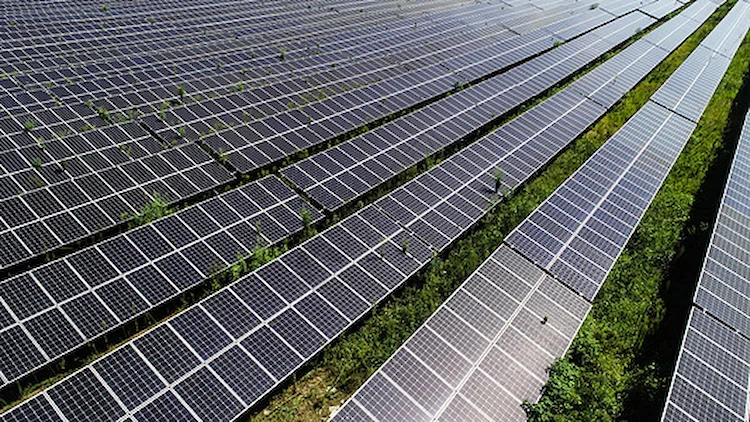
El sistema de generación de energía fotovoltaica conectado a la red desempeña el papel de una microcentral eléctrica, que conecta la generación de energía fotovoltaica, la red eléctrica y proporciona electricidad para la red pública, las cuales se utilizan juntas.
Las células solares experimentan una serie de reacciones bajo la luz del sol para producir electricidad de CC.
Una vez que los inversores y otros equipos transforman la energía de CC, se convierte en energía de CA con la misma frecuencia que la red pública.
En este punto, la alimentación de CA se puede conectar a la red y alimentar a la red más grande en forma de fuente de corriente.
La diferencia entre un sistema fotovoltaico conectado a la red y un sistema fotovoltaico independiente es que ya no requiere una batería, sino que se alimenta directamente a la red.
En comparación con los sistemas independientes, los sistemas fotovoltaicos conectados a la red son menos costosos, tienen una mayor eficiencia de conversión y son más estables en términos de suministro de energía.
Por lo tanto, la dirección principal de la industria actual de generación de energía solar fotovoltaica es la investigación y aplicación de sistemas de generación de energía fotovoltaica conectados a la red.
El grado de aplicación práctica de la generación de energía solar fotovoltaica está estrechamente relacionado con el desarrollo de la tecnología de celdas solares.
En los primeros años, la tecnología de celdas solares no es perfecta, inmadura, la tasa de utilización no es alta y el costo es alto, por lo que solo se usa en juguetes fotovoltaicos, calculadoras fotovoltaicas y otros sistemas de microenergía.
En los últimos años, el desarrollo de la tecnología de células solares ha permitido que la tecnología de generación de energía solar fotovoltaica también haya logrado grandes avances, especialmente en algunas redes eléctricas tradicionales que no pueden llegar al lugar, no hay áreas de electricidad, etc., la aplicación de concentrado independiente planta de energía fotovoltaica para que ellos traigan la luz.
El desarrollo de la tecnología de generación de energía fotovoltaica se está expandiendo, y la generación de energía conectada a la red es actualmente una tecnología de moda.
La tecnología de generación de energía fotovoltaica conectada a la red se puede usar para instalar celdas fotovoltaicas en cercas, techos y otros lugares de edificios, y usar estas celdas para satisfacer las necesidades de electricidad de los usuarios.
La estructura del edificio fotovoltaico integrado es beneficiosa para aliviar la presión sobre el suministro de energía de la red. También se pueden establecer grandes plantas de energía fotovoltaica conectadas a la red en áreas desérticas para generar electricidad utilizando suficientes recursos solares.
Las regiones desérticas y de Gobi son ricas en recursos de energía solar, y el establecimiento de grandes plantas de energía fotovoltaica conectadas a la red de megavatios o incluso kilovatios en el desierto aliviará en gran medida la presión actual sobre el suministro de energía.
Con la inversión de fuerzas de investigación científica, el mundo ha logrado grandes avances en la investigación y el desarrollo de tecnología de generación de energía fotovoltaica.
Especialmente en los últimos años, con restricciones energéticas y precipitaciones reducidas, el mercado de generación de energía solar fotovoltaica también se respeta doblemente, lo que promueve el desarrollo de la tecnología de generación de energía solar.
El desarrollo de la tecnología fotovoltaica tiene un papel muy importante en la reducción de las emisiones contaminantes y el uso eficiente de energías limpias y renovables.
El desarrollo de la tecnología ha reducido el costo de inversión de los sistemas de generación de energía solar fotovoltaica.
La aplicación de la tecnología solar fotovoltaica en instalaciones públicas también ha contribuido a la reducción del gasto público en electricidad.
Como resultado, la tecnología solar fotovoltaica pública está ganando importancia y su desarrollo se está acelerando gradualmente.
Con la creciente escasez de recursos no renovables como el petróleo y el carbón, el desarrollo de fuentes de energía limpias y renovables y su uso eficiente es un tema muy importante.
El apoyo de la política nacional y los subsidios gubernamentales relevantes emitidos han promovido el desarrollo de la tecnología de generación de energía solar fotovoltaica.
La tierra ociosa se puede utilizar y construir completamente como sistemas de generación de energía fotovoltaica conectados a la red.
En lugares donde los recursos de luz son abundantes, la búsqueda vigorosa de tierras ociosas para construir sistemas de generación de energía fotovoltaica conectados a la red no solo reduce el desperdicio de recursos de la tierra, sino que también aprovecha al máximo la energía solar y contribuye a resolver el problema mundial de escasez de energía.
La generación de energía solar fotovoltaica utiliza no solo la radiación solar directa normal, sino también la radiación difusa. En comparación con la generación de energía solar térmica, la generación de energía fotovoltaica hace un uso más completo de los recursos solares.
Y la estabilidad de la generación de energía fotovoltaica es mayor y el impacto en el sistema de energía es menor. El vigoroso desarrollo de la tecnología de generación de energía solar y una mejor utilización de la energía limpia tendrán un efecto positivo en el alivio de la escasez mundial de energía.

Table of Contents Selecting the right pad-mounted transformer requires careful consideration of several critical factors, as these ground-mounted distribution transformers play a vital role
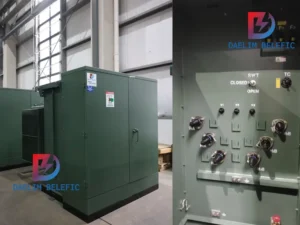
The primary function of the pad mounted transformer is to serve as a critical distribution transformer that steps down higher primary voltage from utility distribution
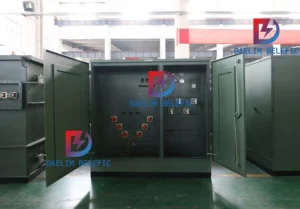
A pad mounted transformer operates through electromagnetic induction, serving as a crucial distribution component that converts high voltage electricity to lower, usable voltages for residential

When looking for the best pad-mounted transformer manufacturer, it’s important to find industry leaders known for reliability and innovative solutions. Pad-mounted transformers are essential in